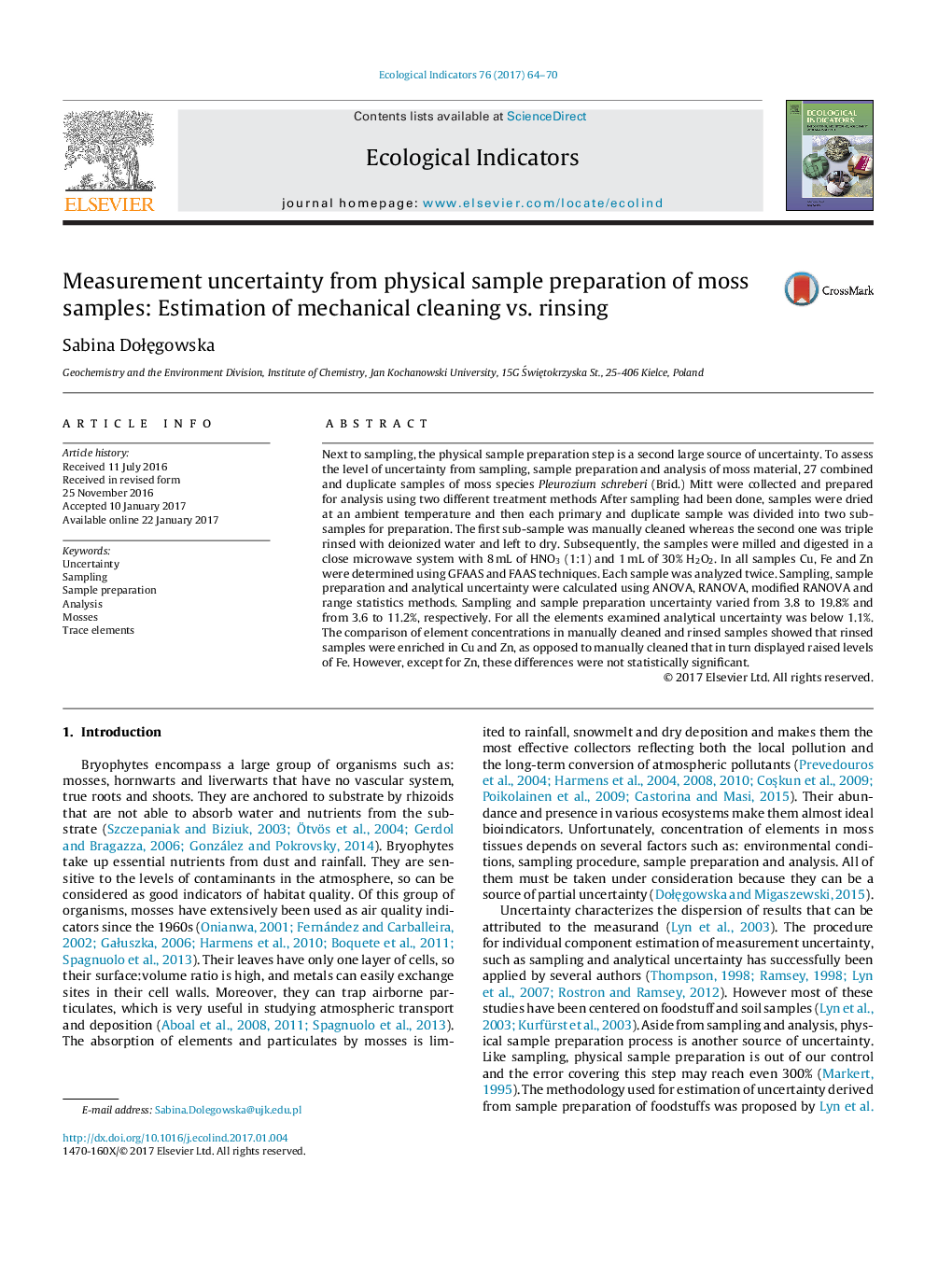| Article ID | Journal | Published Year | Pages | File Type |
|---|---|---|---|---|
| 5741672 | Ecological Indicators | 2017 | 7 Pages |
â¢Moss samples were prepared with two different treatment methods.â¢Concentrations of elements in manually cleaned and rinsed samples were compared.â¢Sampling, sample preparation and analytical uncertainty were estimated.â¢Components of measurement uncertainty were computed with different methods.
Next to sampling, the physical sample preparation step is a second large source of uncertainty. To assess the level of uncertainty from sampling, sample preparation and analysis of moss material, 27 combined and duplicate samples of moss species Pleurozium schreberi (Brid.) Mitt were collected and prepared for analysis using two different treatment methods After sampling had been done, samples were dried at an ambient temperature and then each primary and duplicate sample was divided into two sub-samples for preparation. The first sub-sample was manually cleaned whereas the second one was triple rinsed with deionized water and left to dry. Subsequently, the samples were milled and digested in a close microwave system with 8Â mL of HNO3 (1:1) and 1Â mL of 30% H2O2. In all samples Cu, Fe and Zn were determined using GFAAS and FAAS techniques. Each sample was analyzed twice. Sampling, sample preparation and analytical uncertainty were calculated using ANOVA, RANOVA, modified RANOVA and range statistics methods. Sampling and sample preparation uncertainty varied from 3.8 to 19.8% and from 3.6 to 11.2%, respectively. For all the elements examined analytical uncertainty was below 1.1%. The comparison of element concentrations in manually cleaned and rinsed samples showed that rinsed samples were enriched in Cu and Zn, as opposed to manually cleaned that in turn displayed raised levels of Fe. However, except for Zn, these differences were not statistically significant.
